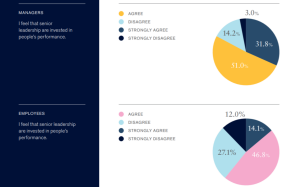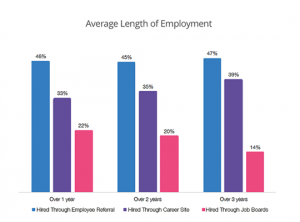by Tobi Elkin@tobielkin, December 2, 2016
A new whitepaper sponsored by Xaxis in conjunction with IDC advances the idea that the media industry is seguing into an era of so-called “programmable brands.”
The whitepaper, entitled “Get Ready For The Age of Programmable Brands,” focuses on how programmatic is changing the way in which marketers are approaching their TV spends. Programmatic TV (PTV) is also expected to change the way media buyers think and they way they buy.
The Xaxis/IDC whitepaper defined programmable brands as the idea of bringing programmatic technology to brand advertising and running brand campaigns in an automated fashion. With programmable brands, digital advertising will begin to challenge TV and print as the dominant brand advertising channel. “Programmable brands will help marketers excel, stand out, and be more competitive,” the paper stated.
Last year, nearly $15 billion was spent on brand campaigns based on automated advertising platforms, according to the whitepaper’s findings. In 2017, spending is projected to reach $31.9 billion. And by 2020, IDC estimates spending on automated advertising will reach more than $100 billion. In terms of programmatic growth, in the U.S., the whitepaper found that automated guaranteed experienced a 103% compound annual growth rate (CAGR) from 2015 to 2020; private marketplace deals (PMPs) 34% CAGR, and RTB (real-time bidding) 15% (CAGR). Globally, automated guaranteed deals experienced 105% CAGR from 2015 to 2020; PMPs 42%, and RTB deals 19%.
The whitepaper found that while the U.S. leads the programmable brand movement, Western Europe — specifically, the U.K. — is also on the forefront, followed by France and Germany. In the Asia-Pacific region, China, Japan, and Indonesia will lead growth. In Latin America, Brazil and Mexico will be markets to watch. Based on the whitepaper’s data, the top five markets in year-over-year projected growth from 2016 to 2020 are: India, Indonesia, Phillipines, Turkey, Norway, and Austria.Overall, the fastest growing markets are:
–Asia-Pacific excluding Japan: 76% CAGR from 2015 to 2020
–Latin America: 76% CAGR from 2015 to 2020
–Central and Eastern Europe: 73% CAGR from 2015 to 2020
–Middle East and Africa is growing faster with 120% CAGR forecast, the whitepaper noted it’s a tiny market
One of the main drivers of programmable brands will be the amount of data available to marketers. The whitepaper identifies six qualities of programmable brand marketing. They are:
Brand marketing: Programmatic advertising has typically been thought of as direct-response advertising. However, programmable brands enable brand advertising campaigns to reap the benefits of automation and data.
Buying audiences, not impressions: With programmable brands, it’s possible to truly target individual users by using machine learning technology to analyze large amounts of data. Marketing is now about data, not about media. Media, the paper notes, are merely used to activate data.
Omnichannel marketing: Programmable brand marketing enables marketers to address audiences beyond boundaries. Omnichannel marketing allows brands to follow individual customers across all devices or channels automatically.
Programmability: Marketers no longer need to use “one size fits all” black-box solutions from vendors to bid for media that fit the data. Instead, they’ll be able to plug in their own, custom bidding algorithms into demand-side platforms. Alternatively, vendors themselves, or even third parties or open-source libraries, will evolve and offer algorithms for marketers.
One such example, is an initiative called “Co-Pilot” which Xaxis debuted in September 2016 in cooperation with AppNexus, a champion of such “portable algoriths.”(Xaxis’ holding company, WPP, is a stakeholder in AppNexus).
Dynamic advertising: With improved data and analysis, programmable brands can deliver customized messages to millions of individual consumers. The paper argues that this will help combat ad blocking by making ads more relevant to consumers.
Attribution: As marketing technology advances, it will become easier and faster to use attribution technology to track key performance indicators that inform marketers of activities that occur farther down the sales funnel. These insights can be used to optimize campaigns.
“We think programmatic TV [PTV] will change the way media buyers think and the way they buy,” said Ekapat Chareonlarp, global vice president and managing partner, Xaxis. Chareonlarp noted that Xaxis began looking at the way marketers approached their TV spends in September 2015. By January, 2016, Xaxis focused on how brands could become more programmable.
“We changed our focus from PTV to programmable brands. Programmatic is mixed in both brand and direct response advertising. Over time, we see that that programmatic is appealing to brand marketers,” Chareonlarp said. Marketers, he said, need to incorporate programmatic buys into TV, mobile, and other media.
Among the whitepaper’s other findings:
–Currently, 85% of buyers in the U.S. use programmatic advertising in one way or another.
–Private marketplace deals (PMPs) are the most popular form of automated deal because they confront ad fraud, viewability, and brand safety issues. PMP deals are perceived to be less complicated forms of programmatic buys.
–Audience segmentation and audience-based buying is increasingly de rigueur.
–Brand marketers don’t place a lot of emphasis on how they’ll change the way they spend on creative. They look more at ad formats instead of talking about dynamic creative optimization. Creatives aren’t embracing the data side of the house, and the data teams aren’t talking to the creatives. There is, as yet, no common language to bridge that gap.
“There’s a tipping point in terms of brand marketers embracing programmatic. They can’t afford not to,” Chareonlarp said. “Every digital campaign will be performance-based, meaning it will get measured somehow. The old brand campaign is obsolete,” he predicted. “The concept of guaranteed performance will reshape the industry. Paying an hourly commission on the buy no longer offers guaranteed performance. Brands need to hold someone accountable.”
Chareonlarp went on to say that all brand markers need to embrace performance metrics and take risks. “The new KPIs for brands are return on ad spend, click to wallet, foot traffic, cost per subscriber, click to cart — and there are still others that marketers will need to embrace and optimize toward.”
MediaPost.com: Search Marketing Daily
(53)





